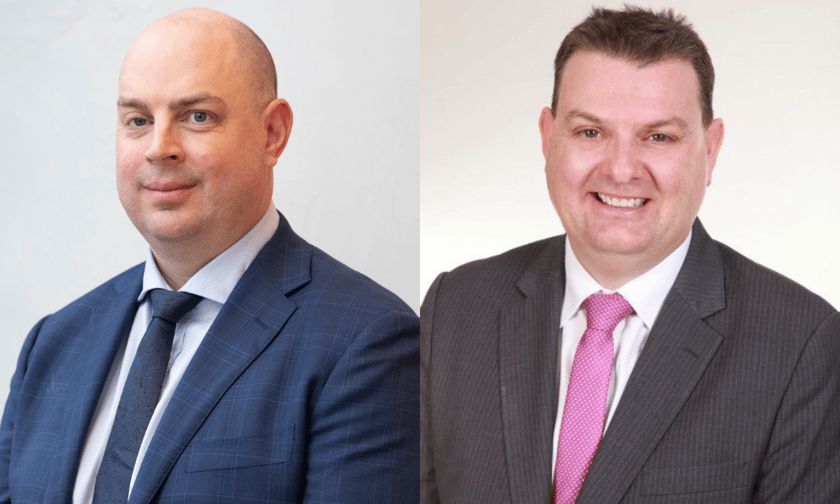

By
Australia’s economy could be at a low point that will see current headwinds morph into tailwinds, though property price growth is expected to moderate in 2025, according to an update from NAB.
Speaking at a NAB property insights market update, Gareth Spence (pictured above left), head of economics at NAB, said GDP growth over the year to June was just 1% annually, the slowest GDP rate of growth seen since the early 1990s.
Slowing consumption growth, slowing business investment growth and an actual decline in dwelling investment contributed, Spence said, while the public sector, in contrast, had supported growth.
“Our forecast is that, certainly, while growth has slowed, we do expect this to be the low point for the cycle,” Spence said.
“From here, we expect mainly the consumer or household sector to improve, and some of those headwinds to turn into actual tailwinds, as consumer spending growth begins to normalise, alongside a bit of a recovery in dwelling investment and some stabilisation in business investment.”
Spence said an historically abnormal drop of 4% to 5% that had occurred in household spending power adjusted for inflation had stabilised over the last three quarters, as the impact of inflation began to wane, growth in income taxes stabilised, and interest payments levelled off.
“The pressure in aggregate on household incomes has begun to kind of stabilise and going forward, that is a key part of why we expect now to be the turning point in growth for the economy is that actually some of those things start to become tailwinds.”
Spence pointed to stage three tax cuts, which would begin to flow through, NAB’s expectation that interest rates would come down, reducing interest payable for those with loans, and a continuing reduction in inflation. He said this would be supported by strength in the labour market.
“The labour market has been quite resilient across the country,” he said.
“Employment growth over the last year nationwide has been about 3%, and that's slightly outpaced very strong population growth. The unemployment rate does remain low, and the participation rate and the employment to population ratio are at record highs, suggesting that a larger than ever share of the population is engaged in employment, so it has been quite resilient.”
House prices are expected to continue rising nationally, with NAB expecting the capital city index will end the year around 7% to 10% higher. However, this growth may taper off next year.
“Next year may slow a little bit, but will still end the year around 5% higher,” Spence predicted.
House prices have risen quite strongly when compared with 2019, Spence said, with Sydney up by about 40%, Melbourne 20% to 30% higher, and Adelaide and Brisbane 70% to 80% higher.
“What is quite interesting is that, over the last six months or a little bit longer, we can see that prices have really started to diverge across those capital cities,” Spence said.
Smaller capital cities like Perth, Adelaide and Brisbane are “still growing strongly”, he said, while Sydney has slowed, reflecting its affordability constraints “starting to bind a little bit more”.
NAB head of valuations Mark Browning (pictured above right) said the cumulative value of residential real estate in Australia had now reached $11 trillion, while commercial real estate was worth $2 trillion.
Looking at the Sydney market, he said that data from the three months to September showed that, in the third quarter, unit prices had shown greater strength than houses.
In Sydney and across the country, Browning said properties in the highest value quartile were the worst performing during the quarter, compared with properties in lower and middle quartiles.
NAB has predicted the RBA will not cut rates in November as some brokers hope, but will instead hold steady until February, when it will start to cut rates back towards “something more neutral”.
“We think the first cut will come in February,” Spence said. “There’ll be a cut around every quarter taking the cash rate to around 3.1% by the end of 2025 or early 2026.”
Although inflation had reduced slower than expected over the first half of this year, the overall backdrop was cooling on inflation, Spence said, setting the stage for rate cuts.
For example, he said that the inflation problem globally had cooled, while wage growth was likely past its peak, and businesses were less able to pass on their cost pressures to consumers.
“I think it’s just a matter of time before the RBA gains comfort the economy has become more balanced in terms of supply and demand; then the pressure on inflation becomes a bit more sustainable and that headline and underlying number begins to trend back to that 2.5%, which is the middle of the RBA target,” Spence said.
